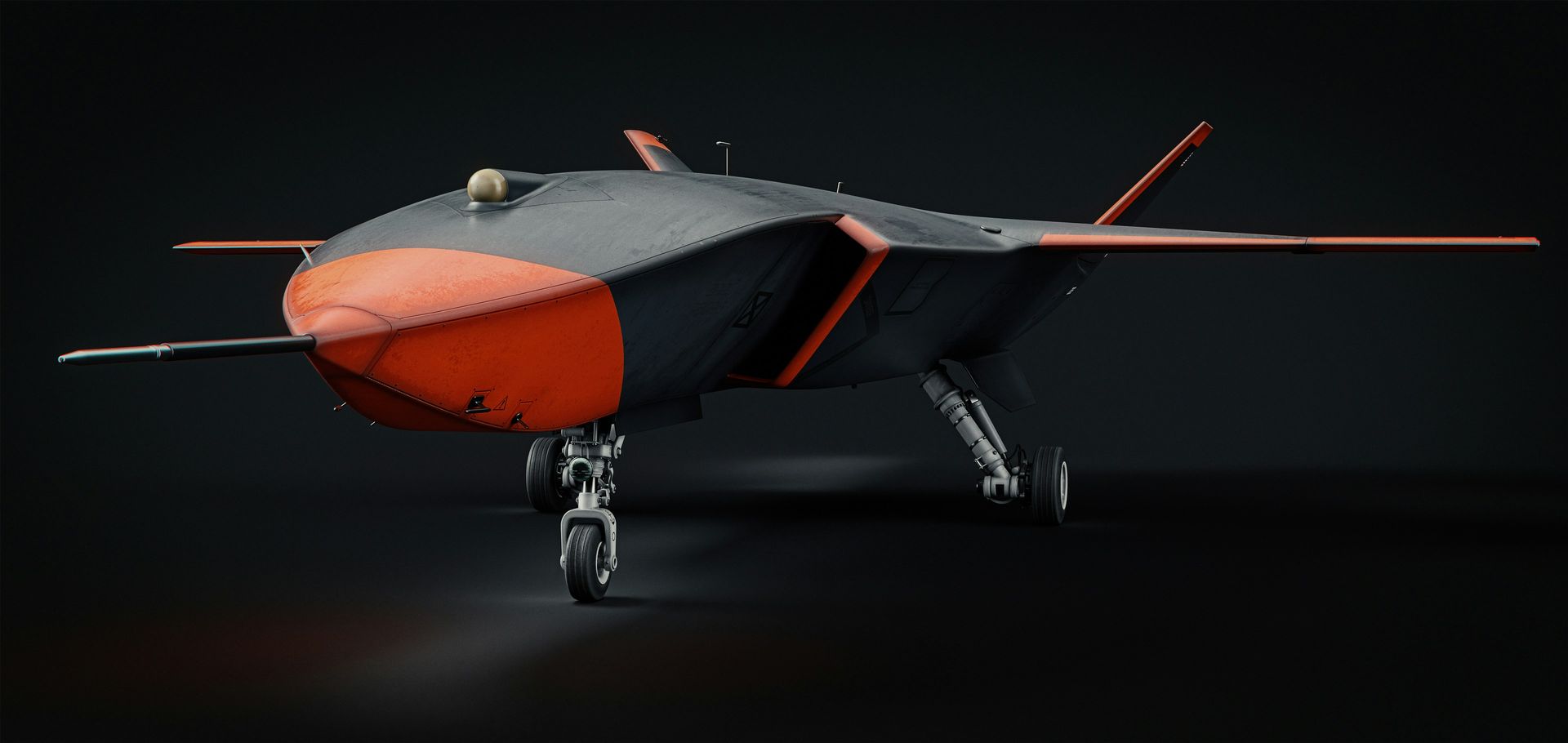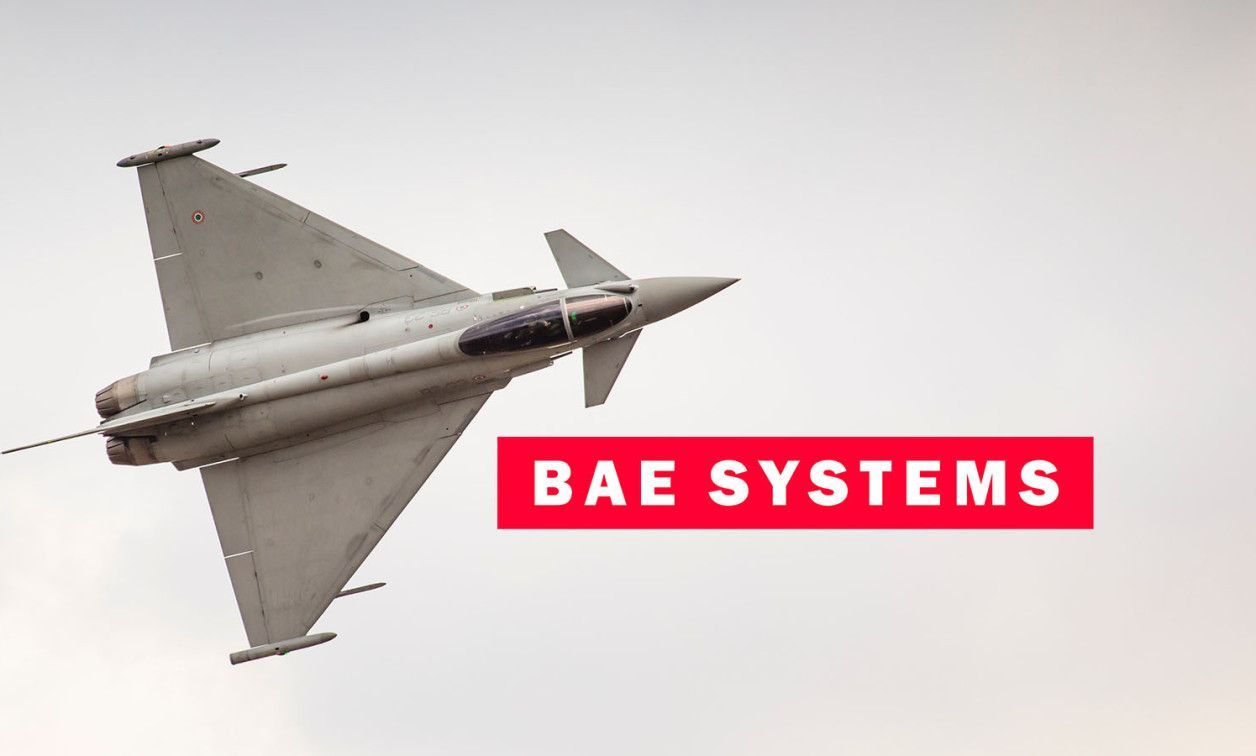
Welcome to our exploration of BAE Systems plc, a formidable British multinational entity headquartered in London, UK, that stands as a global leader in defence, security, and aerospace. This article will provide an in-depth overview of the company's significant contributions, particularly highlighting its pivotal role in military aircraft manufacturing with iconic projects such as the Eurofighter Typhoon, F-35 Lightning II, and the future Tempest fighter jet. Beyond its dominant aerospace presence, we will also examine BAE Systems' diverse operations across naval and land systems, cybersecurity, and advanced space technologies, showcasing its broad impact on national security and technological advancement, alongside its substantial economic and social contributions to the UK.
At the Forefront of Aerospace Manufacturing
BAE Systems is a global leader in military aircraft manufacturing and is consistently ranked among the world's largest defence contractors. Since its formation in 1999 from the merger of British Aerospace and Marconi Electronic Systems, the company has built a rich legacy tracing back to aviation pioneers like de Havilland and Hawker Siddeley.
Their aerospace manufacturing portfolio is truly impressive, featuring some of the most advanced military aircraft globally:
- Eurofighter Typhoon: BAE Systems holds a 37.5% share in the production and a 33% share in the development of this sophisticated fighter jet, with the UK having 40,000 jobs across 400 suppliers involved in its construction. BAE Systems assembles the Eurofighter Typhoon T1.
- F-35 Lightning II: The UK aerospace industry, with BAE Systems as a key participant, has about a 20% workshare in this advanced fighter aircraft. Notably, BAE Systems designs and produces the aft fuselage, fuel system, and horizontal and vertical stabilizers, while Rolls-Royce provides the Liftfan for all F35Bs. They delivered their 1,000th F-35 jet fuselage in February 2023.
- BAE Hawk: One of the world's best-selling advanced jet trainers, generating billions in exports for the British aerospace industry, with over 900 Hawks sold worldwide.
- Global Combat Air Programme (GCAP): BAE Systems is currently developing a sixth-generation fighter in cooperation with Japan and Italy, including a technology demonstrator named BAE Systems Tempest. They are investing in digitalising the entire design and production process for new combat aircraft in the North West of England.
- Future Combat Air Systems: The company's Air business sector, largely based in Lancashire, develops, builds, and tests the RAF's Typhoon fleet and uses digital manufacturing for Tempest. Their FalconWorks® organisation drives innovation in their Air sector.
Beyond specific aircraft, BAE Systems is pushing the boundaries of innovation in aerospace. They are researching the use of AI to assist Typhoon aircraft maintenance engineers, training a large language model with maintenance manuals to provide quicker, more targeted support. They also partner with companies like Digica AI to optimize the heating process of carbon fibre parts for aircraft components using AI, enhancing aircraft performance. Furthermore, they are collaborating with Heart Aerospace, a Swedish electric airplane maker, to define the battery system for Heart’s ES-30 regional electric airplane, leveraging their expertise in developing batteries for heavy-duty ground applications and safety-critical control systems for aerospace.
Not Just Air — Dominating Land, Sea, Cyber & Space Too!
While aerospace manufacturing is a core focus, BAE Systems' expertise spans a much broader spectrum of defence, security, and technology solutions across various domains.
Here’s a glimpse into their diverse activities:
- Naval & Maritime: BAE Systems designs and manufactures all of the Royal Navy’s submarine fleet, including the Dreadnought-class submarines. They are also a proud partner in the AUKUS trilateral military partnership, helping Australia acquire its first nuclear-powered submarines. Their operations in Portsmouth primarily focus on warship support and maintenance for the Royal Navy’s surface ships. In Scotland, their shipyards in Glasgow are focused on building the Type 26 Class frigate.
- Land Systems: The company provides advanced solutions for land forces, including the AMPV programme for the US Army. They announced an agreement in January 2024 to resume production of titanium structures for the M777 howitzer for the US Army, with first deliveries expected in 2025. In Sweden, their Hägglunds business is experiencing accelerated demand for combat vehicles and upgrades, securing notable awards for CV90s and BvS10s.
- Cybersecurity & Intelligence: BAE Systems offers cybersecurity and intelligence solutions, as well as information technology solutions. They acquired Kirintec, a UK-based firm specializing in counter-uncrewed air system and counter-improvised explosive device technology, in September 2024.
- Space Systems: The acquisition of Ball Aerospace in February 2024 significantly enhanced their space portfolio.
- Commercial Applications: Beyond military applications, BAE Systems develops products for commercial markets in areas such as avionics, electric propulsion, and uncrewed air systems. Their Rochester site provides servicing and support to customers of more than 18,000 hybrid and electric drivetrains produced for buses used in major cities like London, Paris, and New York. They also have facilities for environmental testing and evaluation of munitions.
A Significant Contributor to the UK Economy and Beyond
BAE Systems is more than just a defence contractor; it's a major economic driver in the UK. In 2024, the company directly employed 49,600 people across more than 50 worksites in the UK, supporting a total of 159,600 full-time equivalent (FTE) jobs across the UK economy. This means for every 100 direct employees, BAE Systems supported 320 jobs across the nation. Their operations contributed an estimated £13.7 billion to the UK's GDP in 2024, equivalent to 0.5% of the UK economy.
The company also invests heavily in research and development (£6.8 billion over five years to 2024) and education, with £1 billion invested in skills from 2020-2025. They spent £5.8 billion with 5,800 UK suppliers in 2024, including significant investment in the UK's most deprived areas. Exports from the UK by BAE Systems totaled £3.6 billion in 2024, with 22% going to Europe and other countries including Japan and Australia.
Their commitment extends to communities, contributing nearly £5.8 million to UK community organizations in 2024, including over 36,000 hours of employee volunteering. They are also a founding member of Movement to Work, a charity tackling youth unemployment, and have helped over 300 young people secure permanent roles after gaining experience at their UK sites. BAE Systems is focused on sustainability, with a renewable energy strategy established in 2024 to promote clean energy use across its sites, and they are committed to achieving net-zero greenhouse gas emissions (Scope 1 and 2) across their operations by 2030.
Looking Ahead
BAE Systems is not just looking at the present; it's actively investing in tomorrow. With a robust order backlog of £75 billion and a pipeline of over £180 billion in programs extending beyond 2035, the company has excellent visibility for future growth. They maintain a corporate culture that is performance-driven and values-led, focusing on being trusted, innovative, and bold.
From the cutting-edge of military aerospace to vital land and naval defence, and innovative digital and sustainable solutions, BAE Systems continues to play a critical role in global security and technological advancement, safeguarding the UK's industrial capabilities and driving economic growth nationwide. Their expansive and diverse contributions make them a crucial player, ready to navigate the evolving global landscape and deliver advanced solutions for the future.
Key Aspects of Innovation at BAE Systems
UAV and Urban Air Mobility (UAM)
BAE Systems is significantly involved in uncrewed aerial vehicles (UAVs) and is expanding into related areas like Advanced Air Mobility (AAM) and Urban Air Mobility (UAM).
- Development of UAVs: BAE Systems has a history of developing various UAVs and UCAVs (uncrewed combat aerial vehicles), including the HERTI, Mantis, Taranis, and PHASA-35. The PHASA-35®, a persistent high-altitude solar-powered aircraft, completed successful stratospheric flight trials.
- FalconWorks®: Their FalconWorks® organisation, the advanced research and technology development arm of the Air sector, focuses on a range of uncrewed systems and autonomous collaborative platforms for military and commercial applications.
- Acquisitions and Partnerships: In early 2024, BAE Systems acquired Malloy Aeronautics, an SME that designs and supplies electric heavy-lift UAS for both civil and military customers. These rotary-based UAS can carry payloads for logistics, surveillance, casualty evacuation, and anti-submarine warfare. The T-150 UAS from Malloy is already in service with the US Marine Corps and the UK Royal Navy, used for moving supplies between ships.
- Counter-UAS Technology: In September 2024, BAE Systems acquired Kirintec, a UK-based firm specialising in counter-uncrewed air system (C-UAS) and counter-improvised explosive device technology.
- Autonomous Systems Research: They are actively researching and developing autonomous technologies that operate in air, land, and sea, including AI-driven tactics for uncrewed vehicles and "smart co-pilots" for future aircraft. This involves working with universities like Cranfield to develop AI-Driven Tactics capabilities for simulated dogfights.
- Electric Air Mobility: BAE Systems is collaborating with Heart Aerospace, a Swedish electric airplane maker, to define the battery system for Heart’s ES-30 regional electric airplane, leveraging their experience in developing batteries for heavy-duty ground applications and safety-critical control systems for aerospace. This directly supports the development of electric aircraft, which are a key component of UAM.
- Regulatory Frameworks: BAE Systems supports ongoing efforts by customers to establish appropriate principles and policies for the use of autonomous systems in defence, ensuring meaningful human involvement and compliance with national and international law. They were also part of the ASTRAEA programme which aimed to enable UAVs to fly in all classes of airspace under the same rules as piloted aircraft.
Space
BAE Systems has significantly bolstered its capabilities in the space domain:
- Ball Aerospace Acquisition: In February 2024, BAE Systems completed its largest acquisition to date by purchasing the aerospace division of US-based Ball Corporation for $5.6 billion, which will redefine and enhance its position in the space domain.
- Space Electronics and Systems: Their Electronic Systems segment includes space electronics, spacecraft, ground, and tactical systems.
- Satellite Development: The Digital Intelligence business is focusing on delivering the Azalea™ programme to develop and build Low Earth Orbit satellites for the defence market.
- Space Force Solutions: Their Cyber & Intelligence segment provides Air & Space Force Solutions to the US Space Force, offering innovative systems engineering and integration solutions for modernising, maintaining, testing, and cyber-hardening space systems.
- Multi-Domain Integration: Space is a crucial domain for national security, and BAE Systems' technologies and capabilities span air, sea, land, cyber, and space, positioning them as a leader in helping customers meet evolving threats.
Airports
While BAE Systems is not an airport operator, their activities and products interface with airport operations and infrastructure:
- Aircraft Support at Bases: They provide availability support to the RAF Typhoon fleet at locations like RAF Lossiemouth, which are operational airbases.
- Infrastructure Considerations for New Aircraft: Their involvement in electric aircraft development (e.g., with Heart Aerospace) and future air systems indirectly contributes to understanding the needs for ground infrastructure at airports, such as battery recharging and maintenance facilities. The Clean Aviation program, with which BAE Systems has synergies, explicitly highlights the need to explore ground infrastructure to support new aircraft concepts.
- Ground Transport Systems: The Rochester site, while primarily involved in electronics, provides servicing and support for over 18,000 hybrid and electric drivetrains produced for buses used in major cities like London, Paris, and New York. Such ground transport systems are often integrated with broader urban mobility networks that connect to airports.
Renewables
BAE Systems is committed to sustainability and developing renewable energy solutions, particularly in propulsion and operations:
- Electric Drive Systems: They are a recognised provider of electric drive systems for low and zero-emission propulsion systems, with a significant installed base on urban transit buses in cities globally. They are leveraging this expertise for sustainable vehicle mobility in maritime, air, and military markets.
- Electric Aircraft Battery Systems: As mentioned, they are collaborating with Heart Aerospace to define the battery system for their regional electric airplane, bringing their experience in heavy-duty ground applications and safety-critical control systems to aerospace.
- Decarbonisation Targets: BAE Systems is committed to reducing the carbon footprint of its own operations and products, with a target to achieve net-zero greenhouse gas emissions (Scope 1 and 2) across its operations by 2030 and working towards a net-zero value chain by 2050.
- Renewable Energy Strategy: They established a renewable energy strategy in 2024 to promote clean energy use across their sites, including installing solar panels at facilities like Samlesbury, Lancashire, and their Glasgow shipyards.
- Research on Sustainable Fuels: They are researching how to improve the energy efficiency of warships and are looking into sustainable fuels and more efficient engines.
Cybersecurity
BAE Systems offers comprehensive cybersecurity and intelligence solutions for national security and government enterprises:
- Solutions Provider: They provide cybersecurity and intelligence solutions, alongside information technology solutions.
- Cyber & Intelligence Segment: This segment includes their US-based Intelligence & Security business and UK-headquartered Digital Intelligence business, covering cybersecurity activities for national security, central government, and government enterprises.
- Hardening Systems: They provide systems engineering and integration solutions to cyber-harden aircraft, radars, strategic missile systems, and information systems for the US Air Force and Space Force.
- Critical Infrastructure Protection: BAE Systems is working with National Highways to tackle cyber threats to critical national infrastructure in the UK, aiming to prevent malicious attacks on road traffic management and communication systems and adapt to autonomous road vehicles.
- Acquisition of Kirintec: Their acquisition of Kirintec (September 2024) also enhances their capabilities in counter-uncrewed air system and counter-improvised explosive device technology, which is linked to cybersecurity.
- Battlefield Networks: They are building a suite of products and services designed to share data and work seamlessly together across domains, including battlefield networks and synthetic environments to share information.
Other Aerospace-Related Areas
Beyond these specific categories, BAE Systems is involved in several other critical aerospace-related domains:
- Avionics and Control Systems: Their Electronic Systems segment designs and manufactures electronic warfare systems, navigation systems, electro-optical sensors, military and commercial digital engine and flight controls, precision guidance and seeker solutions, and military communications systems. Their Rochester site develops helmet-mounted displays for pilots.
- Research and Development (R&D): BAE Systems is one of the most R&D intensive sectors in the UK, accounting for 8.1% of total business R&D in 2015. Over the five years to 2024, they carried out £6.8 billion of R&D work in the UK, including significant self-funded research. This R&D spans AI, quantum sensing, advanced materials, and digital integration. They collaborate extensively with universities and SMEs. For example, they are researching the use of AI to assist Typhoon aircraft maintenance engineers by training a large language model with maintenance manuals. They also partner with Digica AI to optimise the heating process of carbon fibre parts for aircraft components using AI.
- Simulation and Training: BAE Systems provides high-fidelity simulators for pilot training. They are addressing increased demand for innovative training and simulation software through acquisitions like Pitch Technologies and Bohemia Interactive Simulations.
- Maintenance, Repair, and Overhaul (MRO): They are involved in the maintenance, repair, and upgrade of advanced combat and trainer aircraft. Their operations at Portsmouth primarily focus on warship support and maintenance for the Royal Navy’s surface ships. They also have an aircraft maintenance academy at Humberside Airport.
- Manufacturing Technologies: They are investing in digitalising the entire design and production process for new combat aircraft in the North West of England, enhancing efficiency and innovation. They also produce titanium structures for the M777 howitzer.
- Propulsion Systems: While Rolls-Royce is a major engine manufacturer, BAE Systems' Electronic Systems segment includes military and commercial digital engine and flight controls and electric drive propulsion systems. Their collaboration with Heart Aerospace is directly on battery systems for electric aircraft.
In summary, BAE Systems is a highly diversified defence, security, and aerospace company deeply involved in the entire lifecycle of military aircraft, from design and manufacturing to support and upgrades, while also heavily investing in cutting-edge technologies like AI, autonomy, space systems, and sustainable solutions that often have commercial spillover benefits.





